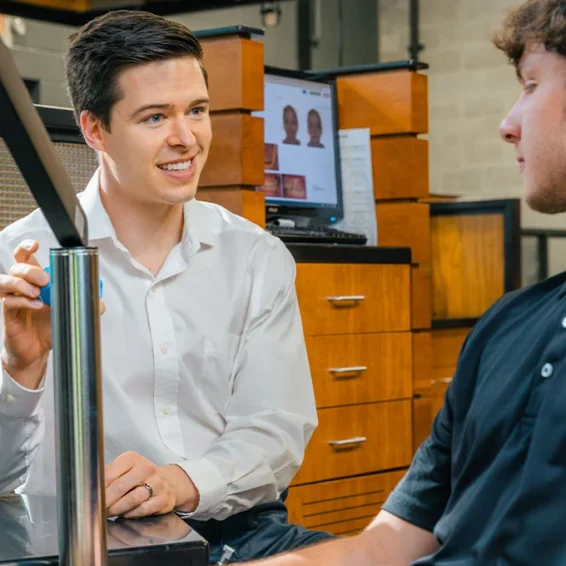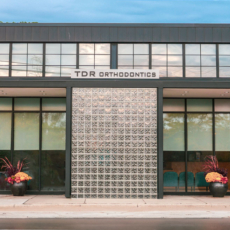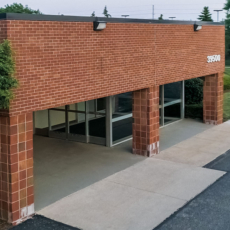At some point in almost every patient’s treatment, we get a comment about the weird language that we use when talking to our clinical assistants. Because we want the blog to be informative and educational, I’d like to take this chance to give y’all a crash course in what we are saying. Don’t judge me for using the word “y’all.” It is impossible to live in the South for four years, marry a Southerner, and not incorporate it into your daily vernacular.
Mystery #1 – Tooth Numbering
When we talk about your teeth we have a specific way to signal to each other what tooth we are talking about. A person with a full set of teeth (including wisdom teeth) has 32 teeth. We number these teeth by quadrants (upper right, upper left, lower right, lower left – or UR, UL, LL, LR). Your front tooth is number 1 and the very back tooth (your wisdom tooth) is number 8. Therefore when you hear us say “the bracket is off on the lower right 6” that means that the lower right first molar (6th tooth from the front) needs a new bracket. When you hear us talking about baby teeth we reference letters instead of numbers (A through E). Take a look at the photo below for a representation of what I’m talking about.
Mystery #2 – Lingual, that’s like your tongue, right?
There are a few terms that sound particularly “medical” that we use: buccal (pronounced “buck-all”), lingual, mesial, distal, gingival, and incisal/occlusal. These are the different parts of the teeth. I will outline them for you.
- Buccal – cheek side
- Lingual – tongue side
- Mesial – towards the middle
- Distal – towards the back
- Gingival – towards the gum
- Incisal/occlusal – towards the biting surface of the tooth.
Not so hard, right?
Mystery #3 – Overbite and Overjet
Probably the two most commonly confused terms that we use are overbite and overjet. Traditionally, having an “overbite” is when a person has a large gap between the upper and lower front teeth; however, in orthodontic terms, this is actually “overjet.” One way that you can remember this is that you are measuring how much the upper teeth “jet” out from the lower teeth. Overbite, in orthodontic terms, is the vertical overlap between the teeth. This is much easier to explain with a photo.
Mystery #4 – Class? I came here to MISS school!
You will hear three “classes” talked about in the office: Class I, Class II, and Class III. These are the ways that the teeth fit together.
- A perfect set of teeth fit together in a Class I orientation (see photo below and how the lines line up) where the upper teeth split between two lower teeth and fit like gears on a motor. This is the most common bite that we fix because you can still have other issues that need to be corrected.
- Class II is the second most common bite that we need to fix. This is when the lower teeth are too far back compared to the upper teeth (the lower line is behind the upper line). Think David Letterman, or of somebody having a weak chin.
- Class III is the rarest of the three bites. This is when the lower teeth are forward of the upper teeth (the lower line is in front of the upper line). Think Jay Leno, or a bulldog look.
Mystery #5 – 18, 162, 16-22, so many numbers!
This is an easy one to get confused on. I sit down and ask the assistant: “what are we in?” and they tell me “upper and lower 16 NiTi” and to that, I respond “Okay great, let’s move to 18 steel upstairs and an 18 NiTi downstairs.” Did that make any sense to you? Probably not much. The numbers that we use represent the sizes of the wires. They are measured in thousandths of an inch so a 14 is actually .014” in diameter, a 162 is .016” x .016”, and a 17 x 25 is .017” x .025”. In general bigger wires are stronger and allow us to move the teeth better.
Mystery #6 – Did you say NiTi or Mai Tai?
No, we are not enjoying a delicious tropical drink while working. Just want to get that out of the way. After every number, as discussed above, we will either say: NiTi, stainless, beta, or copper. These are the different metals that we use. Here are the basic reasons why we use each metal:
- NiTi (stands for Nickel-Titanium): This is a “shape memory” alloy that we cannot bend. It is used to get the teeth straight after the braces are placed. Because we can’t bend these wires they are not generally used after the first few months of treatment.
- Stainless steel (sometime shortened to “stainless”): This is the stiffest of the orthodontic wires. Often this is our go-to wire before the SureSmile scan so that you can start wearing rubber bands. We have the ability to bend it is a great wire to fine detail the position of teeth with.
- Beta: Ready for a mouthful? This is actually a Titanium-Molybdenum alloy. It is one of the newer wire materials. It is not nearly as stiff as stainless steel but we can bend it (unlike NiTi). That means that it is more comfortable because it places a bit less force on the teeth.
- Copper: This is actually Copper-Nickel-Titanium. Probably the newest wire material and it is just awesome. This shape memory wire material actually responds to body temperature. When you cool the metal down it goes limp like wet spaghetti and as it heats up to body temperature it retains its shape. This is the wire that the SureSmile robots bend because we cannot bend it by hand. Check out this video to see copper NiTi in action!
Mystery #7 – Just hit the “EC” button
We have three basic ways to attach the wires to the brackets: 1) single tie, 2) EC, and 3) steel tie. Single tying is the easiest and most common. These are small rubber bands that wrap around the bracket to hold the wire into the bracket. An energy chain (EC) is used when we need to close spaces or want to prevent spaces from opening. EC is basically small rubber bands linked together. It does come in different colors but only allows you to have one color per arch. Steel tying is used when want to really get a wire tight into a bracket. This is a very small steel wire that is used to cinch down the wire. If you’ve ever had these placed you would remember because of the extra pressure that you feel as well as the “catfish” appearance before the wire is clipped short.
There you have it! You are now ready to decipher the mysterious language of orthodontics. But I couldn’t let you go without a test. Try to decode this conversation without looking back:
- Rhonda: Dr. Groth, we are in 16 x 16 copper both upper and lower. Single tie on the top and EC on the bottom. The LR4 was off so we need to replace that.
- Dr. Groth: Things look great! Class I right and left, way to go! Let’s move to the 17 x 25 copper, and EC up and down. We will see you back in 8 weeks. Keep up the good work!
Did you get it? Hopefully so! If there are any other “mysterious” things that you hear around the office, let us know so we can do another “Breaking the Code” post or answer it directly. Thanks for reading!






